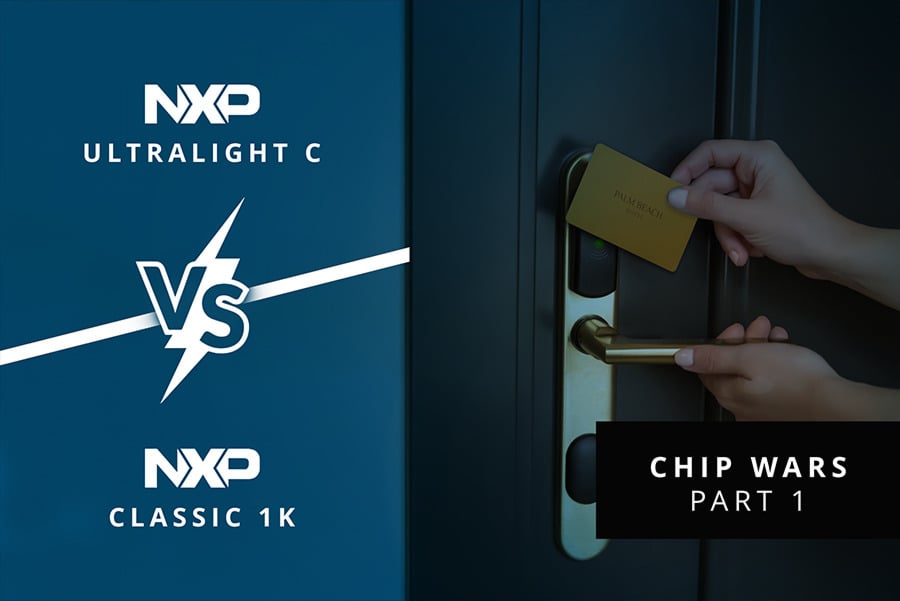In today's fast-paced world, security is a paramount concern, especially in the hospitality industry. With hotels serving as temporary homes for guests, ensuring their safety and privacy is non-negotiable. Access control systems play a crucial role in safeguarding hotel premises, and the choice of RFID (Radio-Frequency Identification) technology can significantly impact overall security. Two prominent options for hotel access control are the NXP MIFARE Ultralight C and MIFARE Classic 1K chips. In this blog post, we will explore the security benefits of using the MIFARE Ultralight C chip over the MIFARE Classic 1K for hotels.
Advantages of MIFARE Ultralight C over MIFARE Classic 1K
1. Encryption and Authentication:
The MIFARE Ultralight C chip stands out due to its enhanced security features. It offers 3DES authentication and 3DES encryption, which are robust cryptographic methods. This means that communication between the chip and the reader is secure, making it significantly harder for unauthorized individuals to clone access cards or intercept data. In contrast, the MIFARE Classic 1K chip relies on older encryption standards, making it more vulnerable to security breaches. Nowadays, hotels are pivoting towards NXP MIFARE® AES for enhanced encryption benefits compared to Ultralight C.
2. Data Storage:
The MIFARE Ultralight C chip provides a limited memory capacity, which is ideal for access control systems in hotels. By limiting the amount of data stored on each card, it reduces the risk of exposing sensitive information. In contrast, the MIFARE Classic 1K chip offers a larger storage capacity, which can be a disadvantage as it increases the potential impact of data breaches if a card is lost or stolen.
3. Secure Transactions:
Hotels often use contactless smart cards for not only room access but also for making payments within the hotel premises. The MIFARE Ultralight C chip's security features make it more suitable for secure transactions. Its 3DES authentication ensures that only authorized individuals can make payments, reducing the risk of fraudulent charges. The MIFARE Classic 1K chip, while capable of handling transactions, may present higher security risks due to its less robust encryption.
4. Resistance to Attacks:
MIFARE Ultralight C chips are designed to withstand various types of attacks, including brute force attacks, which involve repeatedly trying different authentication keys to gain access. This chip's security measures make it challenging for attackers to compromise the system. In contrast, the MIFARE Classic 1K chip has been vulnerable to certain well-documented attacks, which could potentially lead to unauthorized access.
5. Future-Proofing:
As technology advances and security threats evolve, it's essential for hotels to invest in access control systems that can adapt to these changes. The MIFARE Ultralight C chip, with its stronger security features, is better equipped to meet future security requirements and standards. This can save hotels from costly upgrades and replacements down the line.
6. Compliance with Industry Standards:
Many hotels are subject to regulatory requirements and industry standards related to guest safety and data protection. The enhanced security provided by the MIFARE Ultralight C chip aligns more closely with these standards, making it a more suitable choice for hotels seeking compliance and wanting to maintain a good reputation.
In conclusion, when it comes to ensuring the security of hotel access control systems, the NXP MIFARE Ultralight C chip outshines the MIFARE Classic 1K chip in various aspects. Its robust encryption, resistance to attacks, and future-proofing capabilities make it the superior choice for hotels looking to provide their guests with a safe and secure environment. Investing in the right technology is an investment in the reputation and trustworthiness of your hotel.









Login and Registration Form